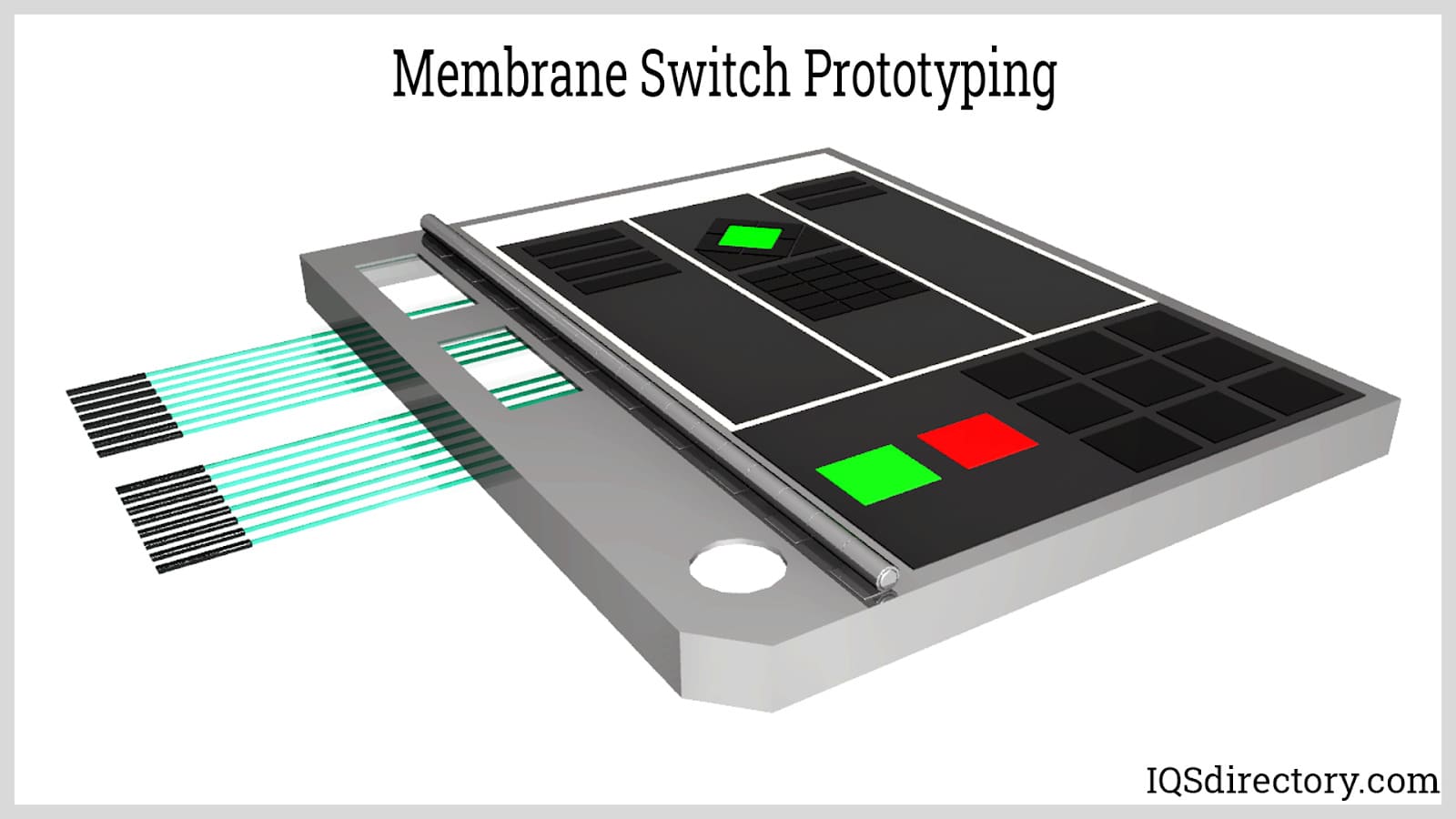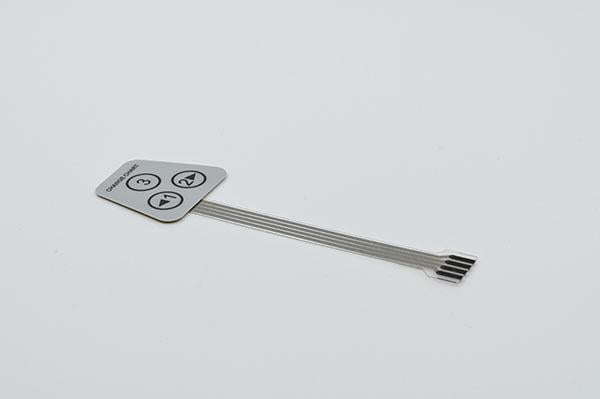You’ll experience the difference when collaborating with a premium membrane switch manufacturer.
You’ll experience the difference when collaborating with a premium membrane switch manufacturer.
Blog Article
What to Try to find When Selecting a Membrane Layer Change for Your Project
When you're choosing a membrane switch for your project, a number of key aspects come into play. You'll need to believe regarding the materials, design, and how well it straightens with your brand name.
Comprehending Membrane Switch Over Elements
When you plunge into the world of membrane layer buttons, it's essential to understand the vital components that make them operate. The switch commonly is composed of three major layers: the graphic overlay, the spacer layer, and the circuit layer. The graphic overlay gives the aesthetic interface, presenting buttons and signs you require for easy navigating. Underneath that, the spacer layer warranties there's sufficient range in between the circuit and the overlay, allowing the switch to trigger without consistent pressure.
Comprehending how these layers work with each other aids you pick a membrane button that's dependable and fits your job requirements. Pay close attention to the thickness and product of each layer, as these factors influence longevity and capability in numerous atmospheres.
Product Choice and Its Impact
Picking the ideal materials for your membrane layer button can considerably impact its performance and durability. The selection of substratum, usually polyester or polycarbonate, affects longevity and versatility. Polyester is extra abrasion-resistant, while polycarbonate uses better clearness and strength.
Next, take into consideration the adhesive. It requires to endure environmental elements like dampness and temperature level adjustments. A strong glue guarantees that your membrane layer switch stays undamaged in time.
Do not fail to remember concerning the visuals overlay. The printing approach utilized, whether silkscreen or digital, influences the button's appearances and long life. High-grade inks will withstand fading and scratching, maintaining a professional look.
Lastly, consider environmental problems. If your gadget will certainly be exposed to extreme chemicals or extreme temperatures, select products developed to withstand these difficulties. Your selections in materials will ultimately establish the button's dependability and individual satisfaction.
Layout Considerations for Individual Experience
Picking the appropriate materials lays the foundation for an effective membrane switch, however the style likewise plays a significant role in customer experience. You'll desire to review just how the format affects use (membrane switch manufacturer). Maintain buttons and symbols user-friendly and well-spaced, making it easy for customers to browse without complication

Color and comparison are likewise essential; guarantee that your layout is aesthetically attractive but still practical. High comparison assists individuals quickly identify switches, particularly in low-light problems.
Finally, assess the general visual. A streamlined and modern style can elevate individual understanding and make your item extra appealing. Balancing performance with an engaging design will lead to a much better user experience and inevitably, a much more successful product.

Ecological Aspects and Resilience
When choosing a membrane switch, you require to think about how it'll carry out in different atmospheres. Elements like temperature resistance, dampness and chemical exposure, and mechanical wear can considerably affect its resilience. Comprehending these elements will certainly help you select a button that withstands your details conditions.
Temperature Resistance Requirements
As environmental conditions can differ widely, recognizing temperature resistance is important for making certain the toughness of your membrane layer switch. You require to assess the temperature array in which your device will certainly operate. High temperatures can trigger products to degrade, leading to failure, while reduced temperature levels could make components breakable and vulnerable to cracking. Make sure to check the specs of the materials made use of in the button, like the adhesive and overlay, as they straight impact efficiency. It's also important to consider prospective temperature changes and their impacts on the button's integrity. By selecting a membrane button with appropriate temperature resistance, you'll improve its lifespan and maintain performance in tough environments. Choose wisely to stay clear of pricey replacements down the line.

Moisture and Chemical Exposure
Wetness and chemical exposure can greatly influence the efficiency and durability of your membrane layer switch, so it's important to recognize the environment in which it will be utilized. Constantly consult the maker's requirements for chemical compatibility to ensure your membrane switch preserves its capability over time. By prioritizing wetness and chemical resistance, you can enhance the toughness of your switch in challenging environments.
Mechanical Damage
While you might prioritize features like appearances and capability in your membrane layer switch, mechanical wear and tear can considerably influence its performance over time. Constant pushing can lead to deterioration of products, triggering problems like tactile responses loss or even switch failing. Choosing a resilient switch assurances durability and integrity, stopping expensive replacements and downtime in your project.
Modification Options for Branding
When it concerns branding your membrane layer switch, customization alternatives are key. You can choose style aspects and shades that show your brand name, along with certain logo design positioning and dimension to improve presence. In addition, picking the appropriate materials and structures can boost the overall feel and look, making your item stand out.
Layout Components and Colors
A wide range of Go Here design aspects and shades can make your membrane layer button not just useful however additionally visually attractive, boosting your brand identification. Don't fail to remember about appearances; including a tactile aspect can boost user experience and make your switch stand out. By attentively picking style components and shades, you not only produce a product that looks excellent yet likewise reinforces your branding regularly and properly.
Logo Design Placement and Size
After completing your design elements his comment is here and colors, the next step is to concentrate on logo placement and size. Your logo is an important facet of your branding, so you'll want it to stick out without overwhelming other layout aspects. Review where your logo will be most noticeable and impactful; usual positionings consist of the leading or facility of the switch.
Assume about the dimension also-- as well big and it could overshadow functional elements, too little and it could obtain lost. Go for an equilibrium that permits your logo to be easily well-known while maintaining the total visual appeals. Don't neglect to ponder exactly how the logo aligns with user communication. This attention to detail will enhance both performance and brand identification in your task.
Material and Appearance Choices
Selecting the best materials and structures for your membrane layer button can significantly improve both its functionality and aesthetic allure. You'll intend to examine alternatives like polyester or polycarbonate, as he has a good point they provide sturdiness and resistance to put on. The texture of the surface likewise plays an essential duty; smooth finishes provide a sleek look, while distinctive surface areas can enhance grasp and responsive responses.
Personalizing the materials and appearances enables you to reflect your brand identity efficiently. You might pick a matte coating to share class or a glossy appearance for a modern-day touch. Don't neglect regarding color options, as dynamic hues can make your button stick out, while low-key tones can develop a more sophisticated appearance
Cost vs. Top Quality: Finding the Right Balance
When you're handling the options for membrane switches, balancing cost and quality can feel overwhelming. A lower-cost button may conserve you money upfront, however if it jeopardizes performance, you could deal with greater replacement prices later.
Try to find suppliers that use a good mix of cost and high criteria. Research their track record and consumer reviews to assess integrity. Occasionally, investing a little bit more in quality materials can save you from future frustrations.
Likewise, think about the long-lasting performance and warranty options. A somewhat much more costly switch with a solid service warranty might prove to be a smarter financial investment. Eventually, it has to do with finding that sweet spot where you meet your spending plan while guaranteeing your project's success.
Evaluating and Quality Control Protocols
While you might find the excellent membrane button style, assuring its quality via rigorous testing procedures is necessary for lasting success. Begin by verifying that the producer follows sector criteria, such as IPC/WHMA-A -620, to ensure a trustworthy item. membrane switch manufacturer. You'll wish to examine for extensive screening methods, consisting of ecological, mechanical, and electrical analyses
Make sure the switches undertake longevity screening, imitating real-world use to recognize any potential failings. Focus on the maker's quality control process, which should consist of regular inspections and audits.

Don't forget to request samples and perform your very own examinations to validate compatibility with your job. Finally, consider how often the manufacturer updates their protocols; innovation in screening can cause enhanced top quality. By focusing on these testing and quality control procedures, you'll increase the possibility of an effective and resilient membrane layer switch for your application.
Regularly Asked Concerns
The length of time Does a Membrane Switch Generally Last?
A membrane layer button typically lasts anywhere from 1 to 10 million cycles, depending on usage and ecological aspects. You'll want to think about your certain requirements to assure it meets your durability needs effectively.
Can Membrane Layer Changes Be Repaired if Harmed?
Yes, you can sometimes fix membrane buttons if they're harmed, yet it usually depends on the degree of the damage. Minor issues could be fixable, while more significant damages typically calls for replacement for correct capability.
What Are the Usual Applications for Membrane Buttons?
Membrane buttons are commonly used in devices, clinical tools, and vehicle controls. You'll discover them in customer electronics, industrial devices, and even gaming consoles. Their flexibility makes them perfect for numerous interface and settings.
Exist Particular Accreditations for Membrane Layer Buttons?
Yes, there are details qualifications for membrane buttons. Seek UL, CE, and RoHS accreditations to ensure safety and security and compliance. These certifications suggest the button satisfies industry requirements for high quality and ecological safety.
Exactly how Do I Guarantee Appropriate Setup of a Membrane Layer Switch?
To guarantee appropriate installation of a membrane switch, clean the surface thoroughly, align it very carefully, and use even stress. Comply with maker standards for glue curing time to make best use of resilience and capability.
Verdict
When picking a membrane button for your project, keep these crucial consider mind: focus on sturdy materials, concentrate on user-friendly design, and take into consideration customization for your brand. Balance cost and top quality by investigating reliable suppliers with strong top quality guarantee protocols. By thoroughly reviewing these aspects, you'll ensure your membrane layer button not just fulfills your task needs but likewise enhances customer experience and mirrors your brand identification properly. Make an educated selection, and your job will certainly flourish!
Report this page